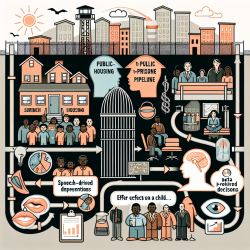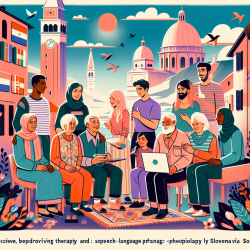Introduction
The recent research article titled "Concentrated Incarceration and the Public-Housing-to-Prison Pipeline in New York City Neighborhoods" provides a compelling examination of how public housing developments contribute to concentrated incarceration. As practitioners dedicated to creating positive outcomes for children, understanding the implications of this research can enhance our ability to support vulnerable populations effectively.
Key Findings
The study highlights that incarceration rates in New York City Housing Authority (NYCHA) tracts are 4.6 times higher than those in non-NYCHA tracts. Furthermore, 94% of NYCHA tracts report incarceration rates above the median for non-NYCHA tracts. This stark contrast underscores the impact of hypersurveillance and hyperpolicing in these communities, which are predominantly disadvantaged and have higher shares of Black residents.
Implications for Practitioners
For practitioners working with children in these environments, it is crucial to understand the broader socio-environmental factors that may affect their clients. Here are some ways practitioners can leverage this research:
- Advocate for Policy Change: Use the data to advocate for policy reforms that address the root causes of the public-housing-to-prison pipeline. This includes supporting initiatives that redirect funds from policing to community development and education.
- Enhance Support Services: Develop programs that provide robust support to children and families in NYCHA developments, focusing on education, mental health, and social services to mitigate the effects of living in high-surveillance environments.
- Collaborate with Community Leaders: Engage with local leaders and organizations to create a unified approach to dismantling the public-housing-to-prison pipeline. Collaboration can amplify efforts and lead to more sustainable community-based solutions.
- Conduct Further Research: Encourage further research to explore the specific needs of children in these communities and the effectiveness of different intervention strategies.
Encouraging Further Research
While this study provides valuable insights, it also opens the door for further exploration. Practitioners are encouraged to delve deeper into the nuances of the public-housing-to-prison pipeline and its impact on child development. Understanding the intersectionality of race, socioeconomic status, and environmental factors can lead to more targeted and effective interventions.
Conclusion
The implications of the public-housing-to-prison pipeline are profound, particularly for children living in these environments. By integrating the findings of this research into practice, practitioners can play a pivotal role in disrupting this pipeline and fostering better outcomes for the next generation.
To read the original research paper, please follow this link: Concentrated incarceration and the public-housing-to-prison pipeline in New York City neighborhoods.










